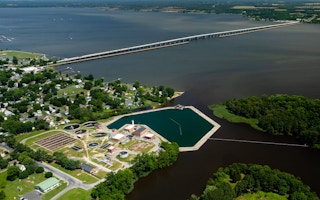What happens to water after washing your hands or flushing the toilet? Worldwide, over 80 per cent of wastewater is released untreated into the environment. Cleaning that water and recycling it for use in agriculture could cut down on pollution of lakes and streams and slow the rate at which food production depletes freshwater. And, the nutrients in partially treated wastewater can nourish plants, diminishing the need for fertilisers.
A new paper in Agricultural Water Management by researchers at the University of Alicante in Spain analysed 125 studies for themes related to the acceptance and use of recycled wastewater for irrigation in agriculture. It found that while the public is concerned about health risks, farmers also consider the long-term effects of the wastewater on the quality and health of their soil, which can vary. And beyond practical considerations of risks and benefits, recycling wastewater has an inherent “yuck factor” to be overcome.
The yuck factor
Eating a green bed of lettuce grown with recycled wastewater might trigger concern or even disgust — a response known as the “yuck factor.”
Unsurprisingly, the researchers found that the yuck factor is less of an issue for farmers during times of drought or when the quality of the recycled wastewater is high. Economics can overcome the yuck factor, too. In the Thessaly region of Greece, 57.9 per cent of farmers responded that they would pay for reclaimed water if it cost half the price of freshwater. Only 8.4 per cent would pay for recycled water if it cost only a little less than freshwater.
Consumers, on the other hand, appear more likely to accept the use of wastewater to irrigate crops if they trust the institutions managing the water and if they understand the treatment process, environmental benefits and issues of water scarcity. One strategy to build trust in wastewater treatment, the researchers say, is to build and run small-scale demonstrations before implementing full-scale water reuse programmes so the public can see the quality of the water themselves. Because seeing is believing.
Risks and benefits
Recycled water is treated to different extents depending on its future use. For example, recycled water entering the drinking water supply is treated more than recycled water used for irrigation.
When adequately treated for a given use, recycled water is safe. But, about 10 per cent of irrigated land globally uses untreated or partially treated wastewater, according to a paper cited in the review.
That presents clear risks for human health and for the environment. Pathogens can be transported in undertreated wastewater, as can metals, pharmaceuticals and endocrine-disrupting chemicals. Disease organisms can move from reused water to food. Metals and salts from the water can build up in soil, changing soil properties such as pH and affecting plant growth.
But other compounds in the water are actually nutritious for soils, replacing or diminishing the need for fertilizers. One study highlighted by the researchers found that in Hyderabad, India, farmers believed the partially treated wastewater contained nutrients that were beneficial to their crops. However, growers also changed which crops they grew because of increasing soil salinity.
Some places are finding success. In Israel, most treated wastewater is recycled and accounts for 40 per cent of the water used for irrigation. A 2012 report found that California reused 13 per cent of its municipal wastewater, with 37 per cent of that going to agriculture. In the dust of the state’s recent drought, cities like Los Angeles are looking to move beyond reuse in agriculture to bring recycled wastewater back to the tap.
Regulations matter
The World Health Organization and the United Nations issued recommendations for safe reuse of water in 1973 and 1987, respectively. Those guidelines, along with others from the European Union, the United States, and elsewhere, have informed development of wastewater reuse regulations around the world. But some cities and countries have limited ability to reliably uphold water treatment regulations.
Moving forward, “the main challenge in using wastewater for irrigation is to shift from informal, unplanned uses of untreated or partially treated wastewater to planned safe uses,” according to a 2017 United Nations report. As this paper points out, education is an important part of that picture.
“As citizens become more familiar with the technology and general understanding of the associated benefits of increasing water reuse,” it concludes, “official, planners and managers may come up against less opposition to additional applications and achieve greater water savings through the widespread implementation of water reuse programs” — a move that could prove crucial to meeting the needs of an increasingly thirsty world.
This story was written by Becky Mackelprang and published with permission from Ensia.com










